Bravely Default 2 is a lot of game, and it feels like I’ve only begun to scratch the surface. It starts as a deliberately uncomplicated Japanese RPG, both in story and gameplay, but slowly turns up the gain over time. Once you get to where I am, even random encounters are prone to more fully exploiting the combat engine, and I’m seeing flaws in my party construction that I wouldn’t have recognized just hours ago.
For most of BD2‘s first 10 hours, it feels like nostalgia-fuel for JRPG nerds, without much more to offer than a double scoop of pure escapism for anyone who grew up in the ’90s. Get a little further into it, though, and there’s an elaborate, challenging combat system lurking underneath for anyone patient enough for it.
Bravely Default 2 Review: Game of the Year 1998
Bravely Default as a series is purpose-built as a traditional JRPG. It contains a lot of familiar features, like spell names imported from Final Fantasy, to make it comfortable and immediately accessible for newcomers and casual players alike. I didn’t know that going in, so the first 60 minutes of BD2 felt like Square Enix plagiarizing itself, where the game doesn’t so much imitate Final Fantasy as build itself from that series’ spare parts.
The resulting product is like an artifact from an alternate timeline. It’s easy to say that it feels like a PlayStation JRPG from 20-something years ago, one nestled in that brief window before the genre felt the full impact of Final Fantasy 7‘s success, but that’s not entirely accurate.
It comes down to this: Bravely Default 2 is one of the least cynical RPGs I’ve played in recent memory, Japanese or otherwise. It’s a straightforward fantasy story played without irony or snark about four new friends who set out on a journey to save the world.
While I’m sure there’s at least one swerve coming, I’m not sure I’ve played a game since Skies of Arcadia — and I’m aware of the weight that comparison carries — that was this unrelentingly optimistic.
That isn’t to say BD2 is totally saccharine. There’s a lot to unpack about its world, its setting, and its characters’ reaction to it. Gloria in particular is about as G-rated a portrait of survivor’s guilt as you can get in a video game, and the mood gets heavy around Chapter 2.
The difference is that the characters are aware of and acknowledge the problems around them, but they don’t waste much time on angst or vaguely hostile stoicism the way many JRPG characters tend to do. In a genre where the player’s party usually has exactly one bright-eyed, optimistic young character to keep the plot moving, that describes everyone in BD2.
One of its most consistent themes so far has been that any amount of good is worth doing, no matter how small, whether it’s bringing a guy his lunch or slaying a monster to protect travelers. That’s the kind of moral that would’ve gotten laughed out of the room in the ’90s, particularly by me, but I find it ironically refreshing now.
I will say this much, though: BD2‘s art style actively works against its storytelling. In or out of combat, every character’s design makes them look like an animated Precious Moments figurine.
This works just fine in combat or casual conversation, but every scene in BD2 that’s meant to be somber or serious ends up one twist of the dial away from a Robot Chicken sketch. You’re going to need to keep your suspension of disbelief firmly in place for this one.
Action Economy
In BD2, you have an additional combat resource called Brave Points (BP), which can be spent to give a character extra actions on their turn. You can also spend up to three BP that you don’t have to take up to four actions in a row. This is in exchange for having to skip an equal number of subsequent turns.
It’s a system that does a lot to liven up every round of combat, even in throwaway fights like the typical random encounter, particularly since even basic enemies can use the same system.
The easiest way to generate BP is by using the Default command, which makes a character focus on defense while delaying their next action. In practice, you’re meant to play each fight patiently, use Default to generate BP, and then use your stored actions to create and exploit windows of opportunity. It’s more strategic than most other turn-based combat systems, and the game gives you a long difficulty curve to get the hang of it.
In addition, BD2 has a job system similar to that of Final Fantasy 5 or FF 14, where you gradually acquire new classes for your four main characters throughout the game. Each job offers its own assortment of active and passive abilities, with just enough complexity built into the system to reward experimentation. You can equip up to two jobs at a time and mix-and-match up to five passive abilities on a single character, which opens the door to a lot of potentially degenerate combos.
(It also means you can accidentally screw yourself over; right now, I’ve got a berserker who’s immune to the berserk status, which takes one of her best skills offline.)
The key to the whole thing, though, is having a nearly infinite amount of patience. Once you get about 12 to 15 hours into Bravely Default 2, the training wheels quietly come off, and it starts placing a heavy emphasis on party construction. Up until this point, you can bumble through everything but a couple of boss fights with just about any crew.
That means that you’re gently encouraged to grind your Jobs via endless monster fights in a game where there’s no such thing as a simple combat encounter. It gets particularly obnoxious when the monsters start leaning into the Brave/Default system, so any random monster can suddenly explode into four consecutive attacks and punch your healer to death before you get an action.
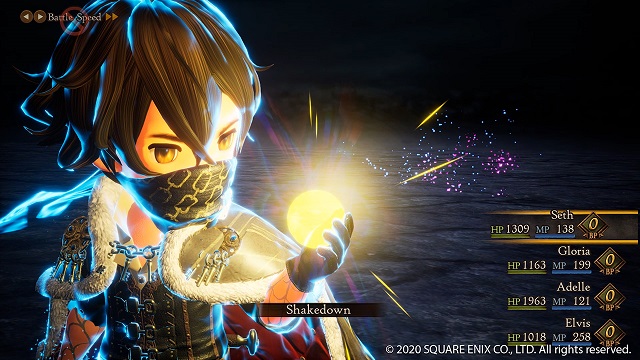
BD2 offers many out-of-combat bonuses that help to speed things up, such as an Exploration Mode, which sends an NPC ship out to explore for rare items without you. After a little while, though, those bonuses feel like they’re papering over the downsides of the system BD2 has built.
If you don’t mind grinding, BD2 is relatively painless and can be fun in that “watching numbers go up” sort of way. It’s got a lot of little downsides that add up quickly, not the least of which is that it’s there at all.
I’m comfortable in saying this is a solid pick for genre newcomers, strategy fans, and anybody who’s got a lot of ’90s nostalgia on tap. Bravely Default 2 is a traditional sort of JRPG, with a heavy dose of escapism and a forgiving but steep difficulty curve.
I’d be happier if the art style was even slightly more realistic, and the combat system is made to be gamed, but I’ve enjoyed most of the time I’ve spent with Bravely Default 2 so far. My biggest question is whether its problems will persist into the late game or if my current qualms are just teething issues ahead of a high-gear combat shift.
Bravely Default 2 Review — The Bottom Line
Pros
- Slow-burning combat system that encourages thinking outside the box
- Surprisingly welcome, easy-going, optimistic tone (at first)
- Breadth of interesting and sometimes wild character builds
- Brimming with nostalgia
Cons
- Too long by at least 20 hours
- Lots of side quests boil down to time-killing busywork
- Random encounters often drag on with revolving monster attacks
- B&D card game doesn’t make sense once Gambler is unlocked
Originally a review-in-progress, it’s been a few weeks, and it turns out I’ve learned few more things — enough to give these final thoughts on Bravely Default 2.
By the time you hit the mid-game, about 30 hours in, you’ve accumulated enough jobs to start exploring some really broken possibilities. In most of the ‘90s and ‘00s-era JRPGs of this type, those possibilities would’ve been reserved for the endgame, to let you stand a chance of defeating the obligatory harder-than-hard sidequest boss.
In BD2, they’re a basic survival tactic. Once the training wheels come off around Chapter 2, BD2 gently encourages you to break its combat over your knee or die. Without some careful party building, random encounters can be grueling endurance challenges, and bosses turn into a waking nightmare.
You have the tools to deal with this, though. Most of the new jobs you can acquire by mid- to late-game open the door to at least one truly busted combination. The only limit is how much time you want to put into creating your combo, and how easy you want to make the game afterward.
The result feels like you’re in a near-constant arms race against the CPU. Every new area throws a few new enemies at you with more obnoxious tricks than the last batch, forcing you to evolve your tactics in response. It’s a challenging game, and it tests a different set of skills than the typical JRPG. You can’t power-level your way through its most difficult encounters; you’ve got to put some real thought into character builds here.
BD2 also goes dark and mostly stays there around Chapter 3, which furthers that tonal clash. There are whole arcs in BD2 that feel like a production of Titus Andronicus performed entirely by Muppets, because the graphical style doesn’t match the topics on display. It’s an art/script mismatch that I never quite got over.
I also have to admit that BD2 has tested my resolve for long games. It is in no hurry to get where it’s going, particularly when you start to crack into side-quests and other optional content. I’d have played through it twice in a row as a kid without blinking, but as an adult, it’s almost more than I’m willing to put up with.
In the final analysis, I’m probably not BD2’s target audience anymore. There’s a lot about the game that I like, from its generally optimistic tone to its low-key but sustained challenge, and nostalgia for my misspent youth pulled me further into the game than I initially thought it would. I appreciate BD2 more than I genuinely enjoy it.
I still recommend BD2 but with qualifiers. Don’t pick it up unless you’re willing to make it a lifestyle choice for a month or so, and you have to be at or near the maximum possible biological tolerance for classic-style JRPGs. Bravely Default 2 is the absolute Platonic ideal of the form, with upsides and downsides that are both traditional for the genre and unique to it.
[Note: Nintendo provided the copy of Bravely Default 2 used for this review-in-progress.]

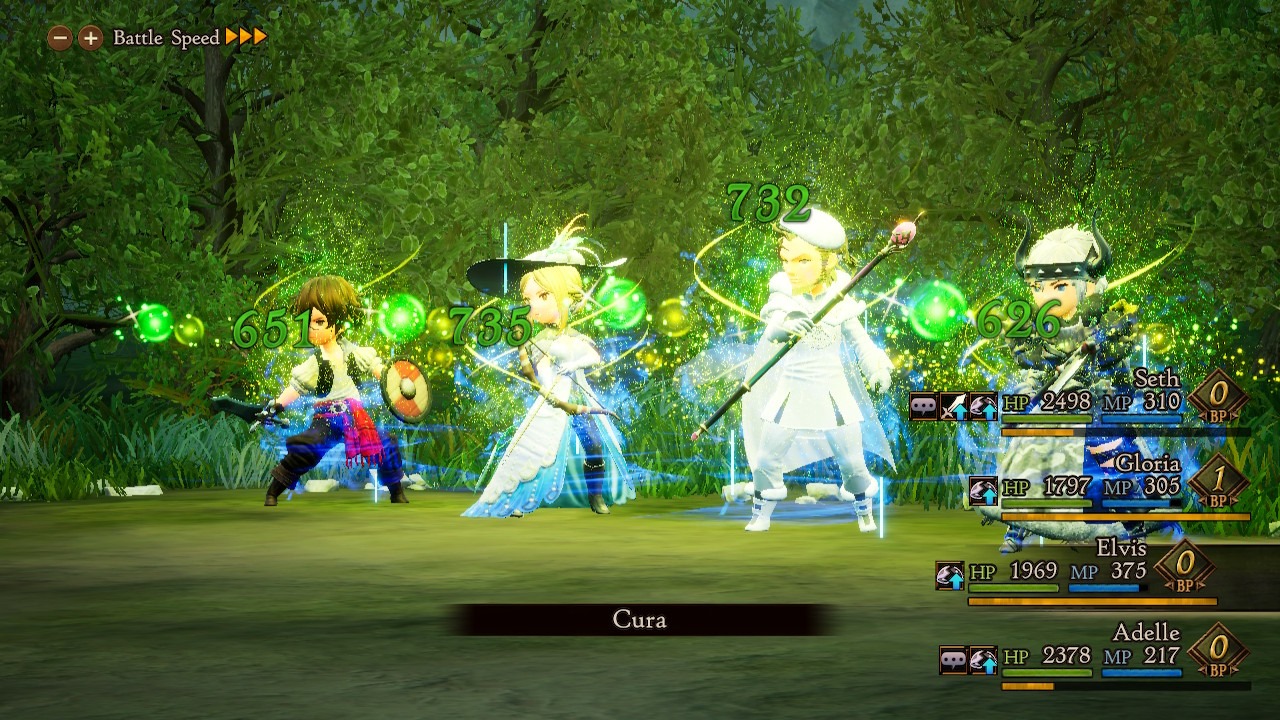
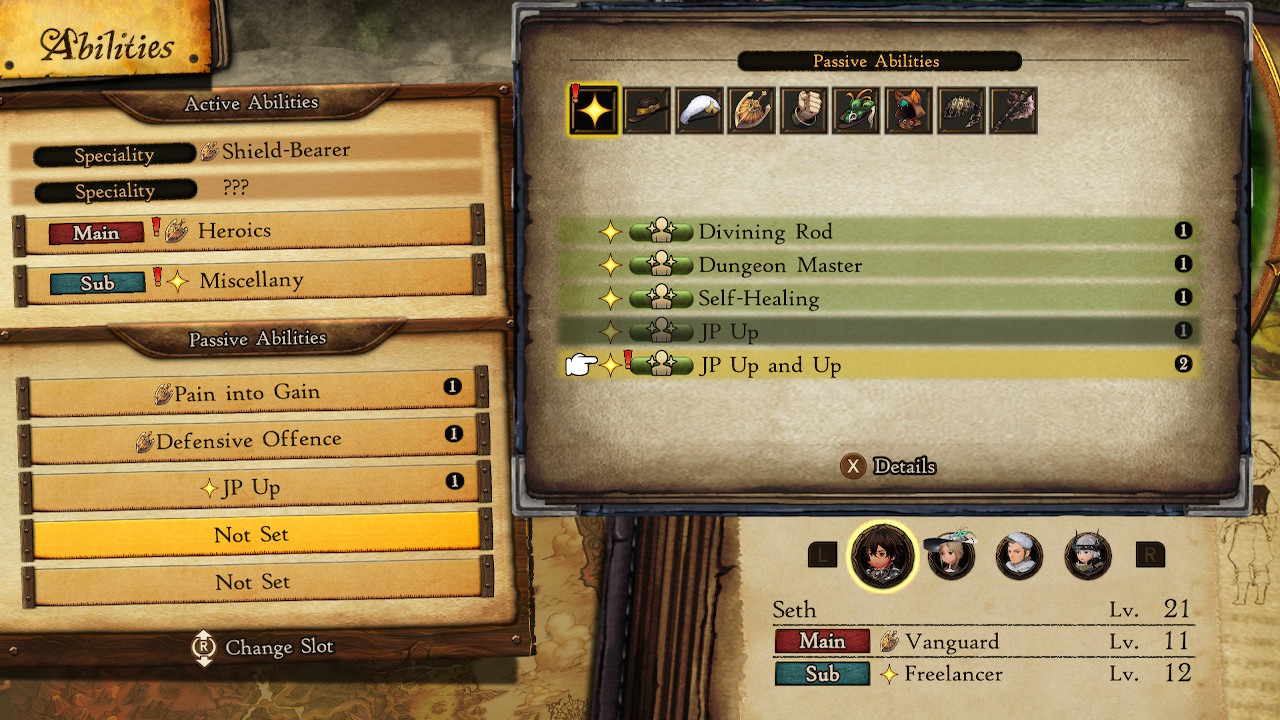
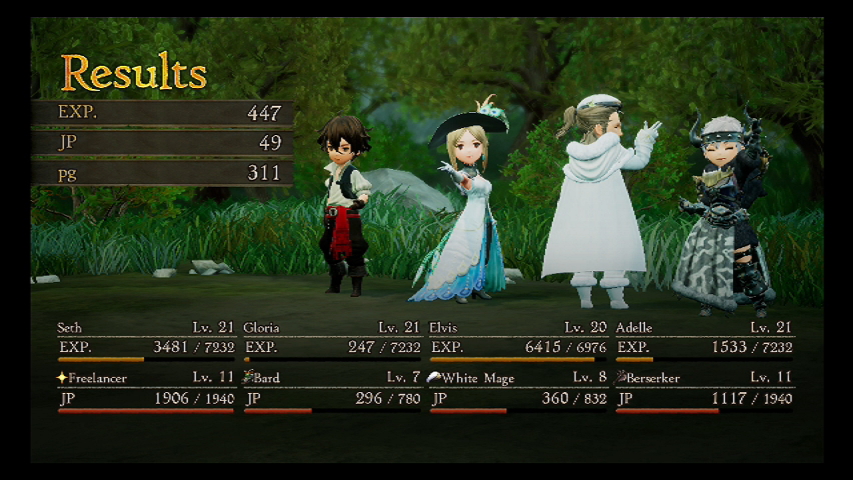
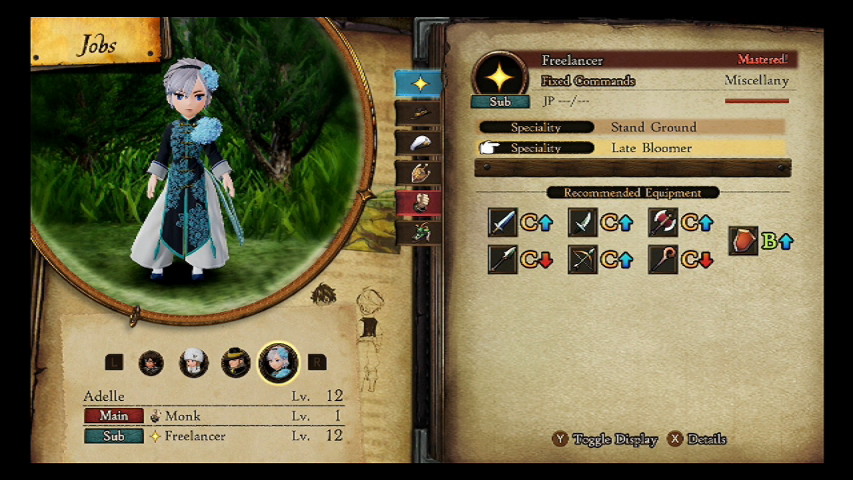
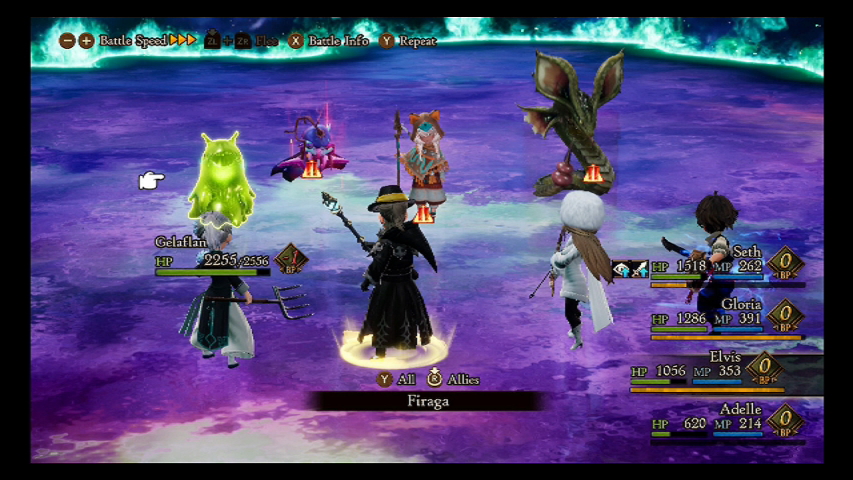








Published: Mar 9, 2021 03:23 am